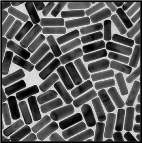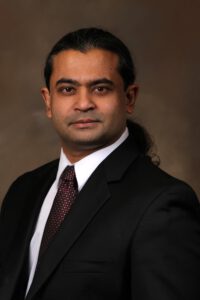
”We are building what we believe will be a new generation of highly sensitive technologies for diagnostics in human health, and our colleagues in the health sciences are working hand-in-hand with us as we move to deployment in the clinical and the point-of-need arenas.” Marc D. Porter, Professor, Department of Chemical Engineering, Director, Nano Institute of Utah.
The enhanced ability to control and characterize materials at the molecular level is the essence of nanotechnology, and has pushed science and technology past unimaginable boundaries. Research within the Department of Chemical Engineering and the Nano Institute of Utah at the University of Utah is at the forefront of this new and exciting field.
The University of Utah (UofU) has a rich history of research in nanoscience with a keen focus on biomedical and healthcare applications, as well as numerous other emerging scientific and engineering areas (e.g., plasmonics, spintronics, and carbonics). In 2008, the UofU launched the Nano Institute of Utah (http://nanoinstitute.utah.edu/) (NIU) to act as an integrative vehicle for researchers across our campus and the State of Utah. Our goal: to propel Utah to the forefront of nanotechnology on the global landscape. The NIU brings the pieces and players together to take on the “grand challenges” and “big science questions” that have socio-economic impact in Utah and beyond. Investigators in chemistry, physics, materials science, engineering, medicine, pharmacy, and electronics engage in cutting-edge research in the fields of nano-therapeutics, nanoscale sensing, nanofluidics, nanosynthesis and nano-photonics, to name but a few. The NIU membership currently consists of over 70 researchers on our campus, including several members of our Chemical Engineering faculty.

Marc Porter, faculty of Chemical Engineering and Director of the NIU, is a nationally recognized nanotechnology expert. His research group is developing innovative use of nanoparticles to detect infectious diseases and the early onset of cancer. In the infectious disease arena, Porter and colleagues from the School of Medicine are creating platforms for the ultrasensitive detection of tuberculosis (TB) and Dengue Fever. In addition, this team is studying biomarkers for early detection of pancreatic cancer. Porter notes, “we are building what we believe will be a new generation of highly sensitive technologies for diagnostics in human health, and our colleagues in the health sciences are working hand-in-hand with us as we move to deployment in the clinical and the point-of-need arenas.”

Director of the Center for Nanomaterials and Chemical Engineering Research Associate Professor, Agnes Ostafin, produces functional nanoparticles and associated technologies to address perplexing medical challenges in hematology and infectious disease. In the NIU, Ostafin along with industry and academic colleagues are working together to develop clinical therapies for red blood cell malfunctions, transfusion, and pediatric diagnostics. Some of these technologies have the potential to impact other areas including cancer treatment, diabetes, and blood banking. Working closely with Dr. Porter, the Ostafin group is pioneering the use of non-antibody based recognition systems that could revolutionize the medical sensor and allow for highly multiplexed detection of a variety of medical markers, not just proteins. This work will have tremendous impact in metabolomics and glycobiology- rapidly evolving fields pivotal to the future of personalized medicine.

The research group of Mikhail Skliar and colleagues from the Huntsman Cancer Institute are exploring the diagnostic and therapeutic potential of exosomes. Exosomes are 30-150 nm vesicles released into the blood different cell types, including cancerous cells. They have shown to be important in immune response, and may play a role in the paracrine system as well as long-range intercellular signaling. Exosomes envelope small RNA’s and other molecular cargo inherited from the cell of origin; a potential mechanism for cell communication is through exosomes fusing with recipient cells and releasing their genetic information and other molecular content. The difference in the composition of RNA cargo of exosomes originating from different cells types has incredible potential for minimally invasive, inexpensive, and early detection blood test for cancer and other diseases. The goal of Prof. Skliar’s group is to identify the biophysical properties of cancer exosomes that most distinguish them from normal exosomes and the large background of nanovesicles naturally found in blood, and to use these properties for fractionation, enrichment, and identification. This ongoing work is expected to lead to the development of novel assays and instrumentation for cancer exosome detection and diagnosis from a small liquid biopsy, using biophysical and biochemical properties alone or in combination with molecular analysis of their cargo.
Chemical Engineering research faculty Mano Misra and Swomitra “Bobby” Mohanty are exploring a titanium dioxide-based nanotube platform that detects the presence of volatile biomarkers as a strategy for non-invasive diagnosis of tuberculosis. The current NSF-funded project is focused on tailoring titanium dioxide nanotubes with specific metals that bind volatile biomarkers of interest in the breath. The metals on the titanium dioxide nanotubes are customized to have the highest binding affinity for the compound of interest. This technology is designed to give results in minutes as opposed to standard techniques, which take weeks to determine a diagnosis for TB. It is envisioned that this technology will be deployed in resource-limited, TB-endemic regions where access to health care is limited, such as Southeast Asia, Africa, and South America. The technology is also being expanded for other applications, such as oxidative stress measurements and point-of-use water quality assessment and remediation.




